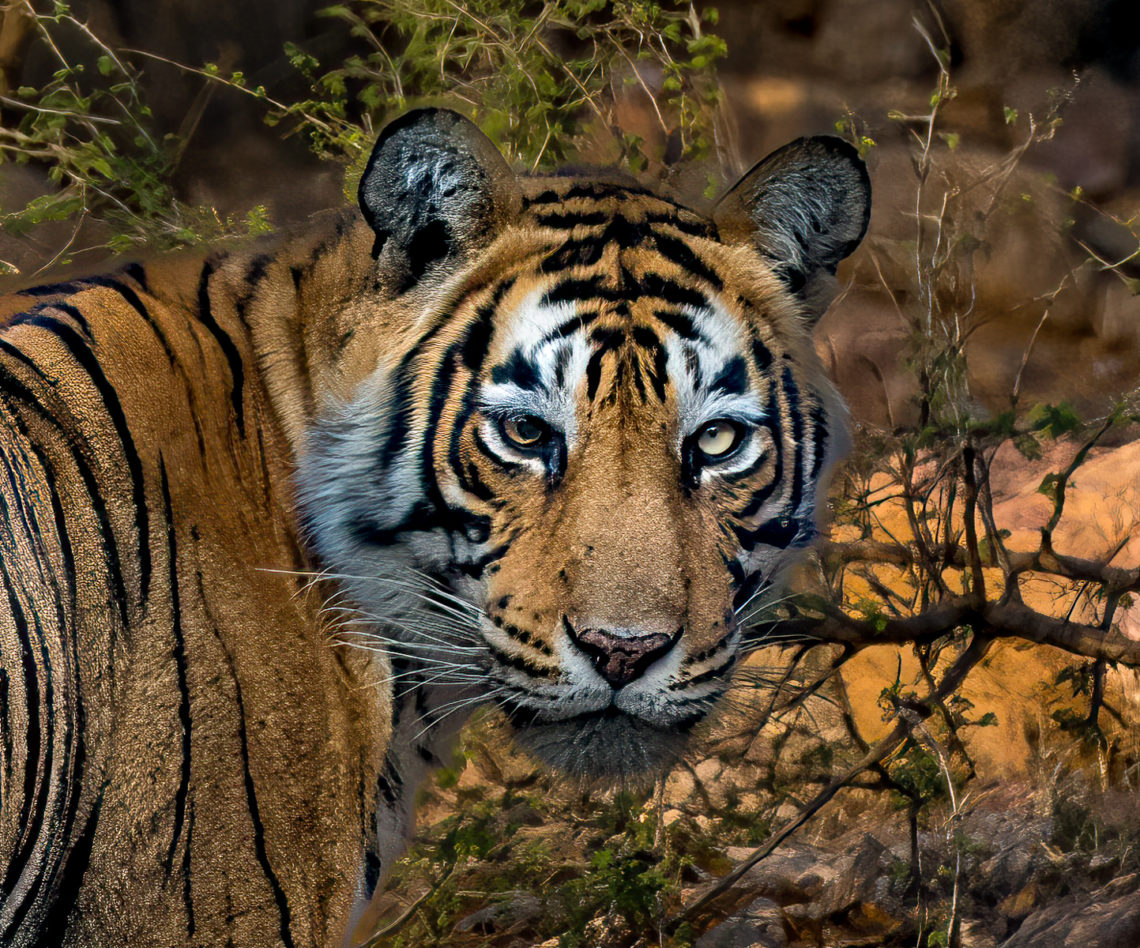
Seeing a Royal Bengal Tiger in the wild, a fantasy or reality? At the Ranthambore National Park Tiger Reserve near Jaipur, we spotted our first wild tiger by sheer luck and Mehmet’s lucky bangles. After three 3-hour game drives, we had all given up since the park closed in 30 minutes. Our guide got a phone call, which is not allowed, and asked us to hang onto our seat belts. After bouncing over the long dirt road, we spotted four jeeps all lined up on the bridge, which meant there was no place for another jeep. One by one, the jeeps started to leave, which meant the tiger was leaving. From our obscured position, all we could see was brush moving and heard roaring sounds. We were deflated. The driver took us to paths they anticipated the tiger might travel, but no luck.
Finally, driving back toward the bridge, the driver saw tiger tracks and yells out that he thinks the tiger moved across the road. We flipped a U-turn and turned down a side road, and there was our tiger standing on the road, marking its territory, then finally walking away! It was an incredible shock to see a tiger totally unobstructed. We felt so very lucky, after almost giving up hope of ever seeing one at the end of the third game drive.
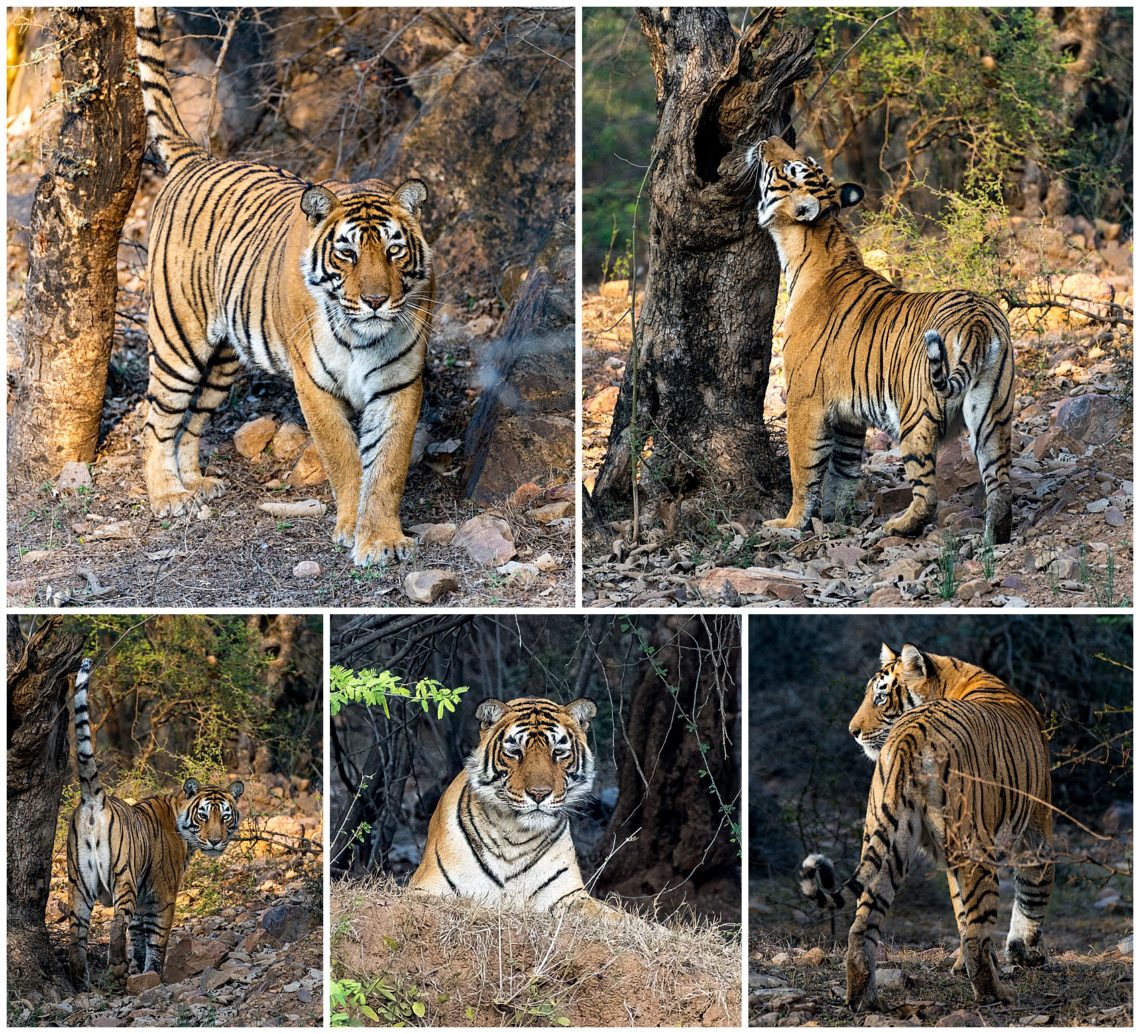
Being able to see a Bengal Tiger in the wild is like winning the Lottery. Ranthanbore National Park has one of the more complex game drive system we’ve encountered. We were told this was the same system for all Indian Tiger Reserves. Apparently, the ticket counter opens at 9:00 am for the morning drive, and ticket holders get in iine to get their assigned guide and jeep (+driver), which may take another 30 minutes. You cannot make a request for a specific driver nor guide nor route. Then you get assigned one of 20+ trails by a random generator, and cannot deviate. It is rumored that it is more likely you will see a tiger in zones 1-6, so we were deflated to get assigned zone 11. A couple of times, we were within 200 meters of a spotted tiger in the adjacent zone, yet chains and cameras prevented the drivers from crossing their assigned zone without substantial penalties. There are also rules where you cannot do a u-turn to return to a site, so we saw several jeeps driving backwards. You also need to check out on time, even if the ticket office delayed your start time.
There are fewer than 75 Royal Bengal Tigers , the largest and most majestic species, in existence in the wild in the world. They are scattered in this 515-acre park, of which only 20% of the park is accessible to the public. Note that each tiger is territorial, so there has been a naming system developed. Our tigress above was named Aishwarya, and is recognizable by her different shaped eye. When we finally caught up with our other jeep, they found the tigress perched on a hill (center bottom), watching some deer below, who were unaware of the tigress’s presence.
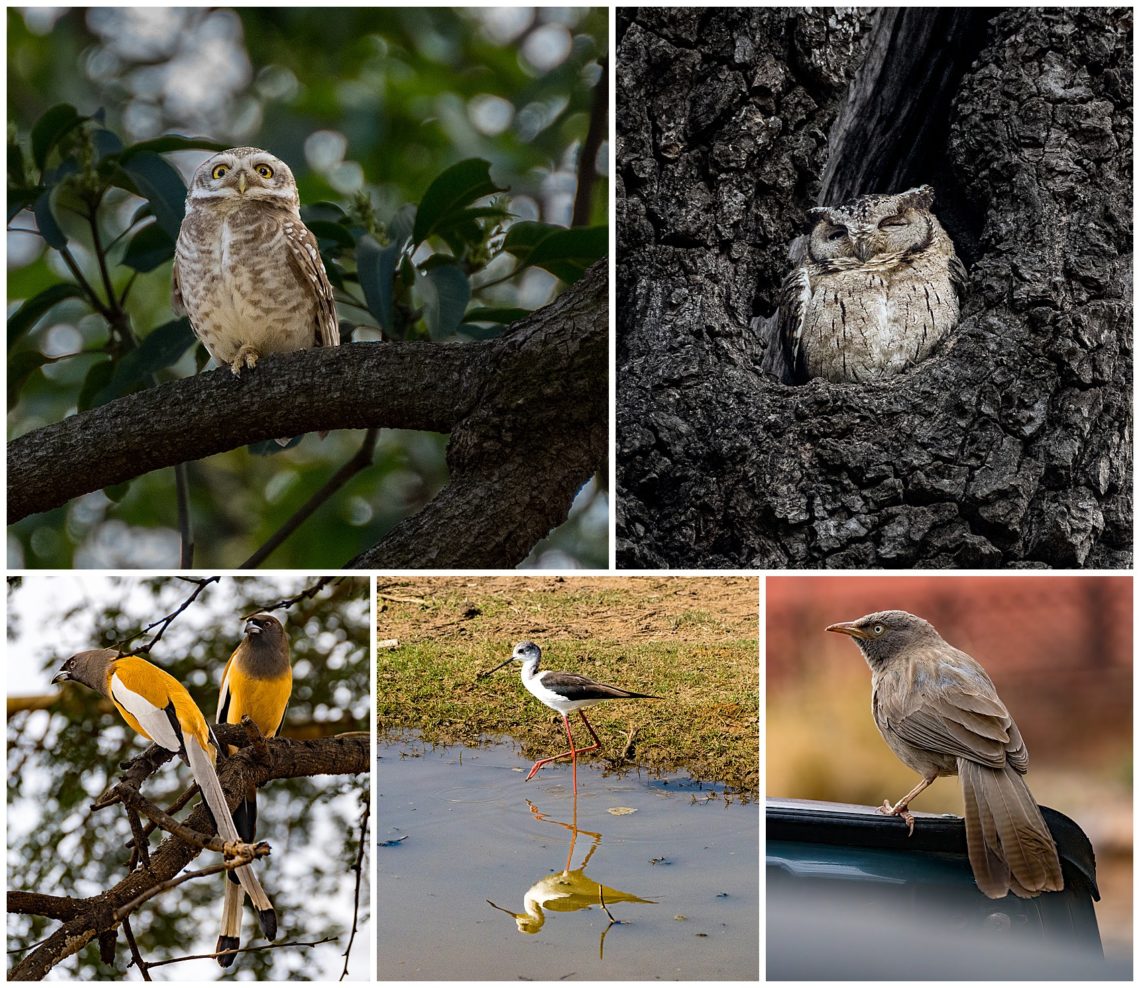
There are many types of animals you can see along the way. For the most part, we had tiger on our minds and determined to spend most of our time searching for the elusive tiger. Every drive started with seeing the cute tree owls (top row). There were hundreds of little birds everywhere we turned. Ranhambore is one of the largest national parks in Northern India, and was once considered as one of the major hunting grounds of the maharajas.
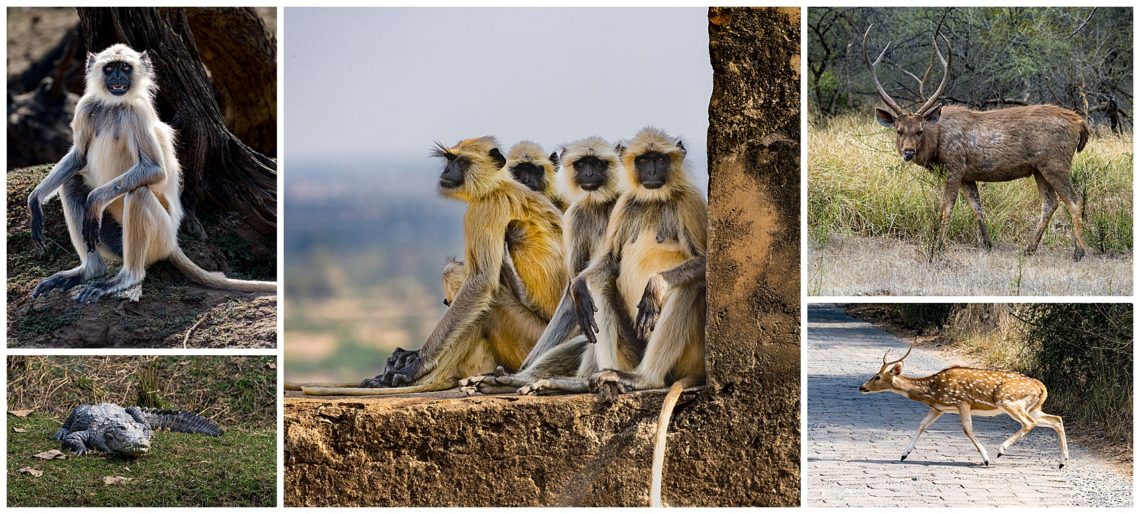
Other animals along the way included monkeys, crocodiles, spotted deer, sloth bears, sambar deer (the favorite meat of the tigers), wild boars, squirrels, mongooses, and other mammals. Going on a game drive is not as romantic as it sounds. It involves miles of boring driving around on a dusty bumpy road seeing nothing but whichever animal randomly crosses the road, because the jeeps cannot go off road. Occasionally, you spot an animal or bird that is close to the road and unobstructed by tree branches and brush. Being in the wild, the animals have no set times when they cross the roads, and you can easily miss seeing an animal within minutes, since there’s no communication for the drivers to contact other drivers to locate the animals. Then, you’re not allowed to deviate from your assigned route, even to an adjacent zone. This is SO different than our experience in Africa.
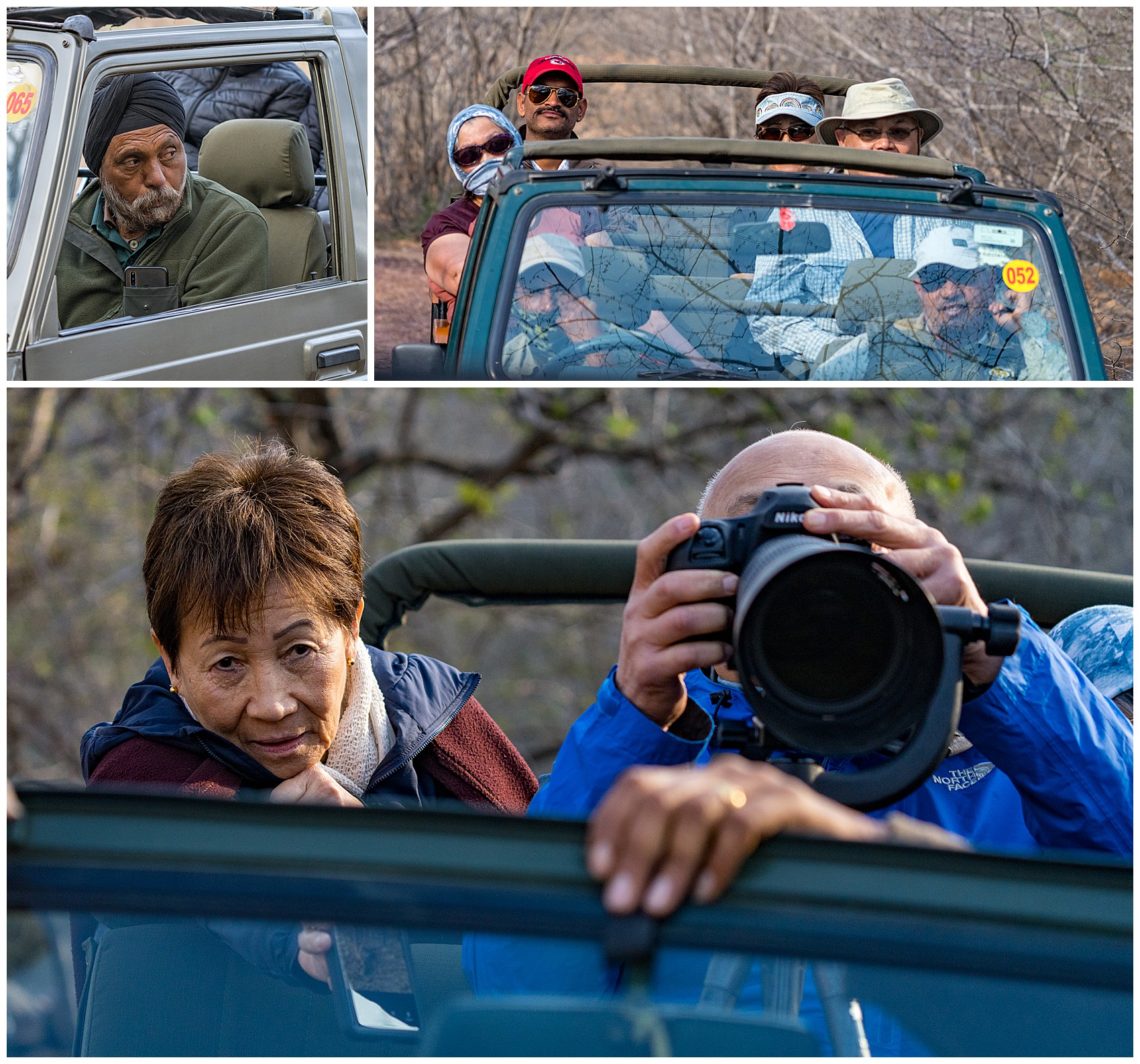
Our group had two jeeps with two rows of seats, plus the driver and guide in front. This image shows Tim with his large lens, while Alene looks on.
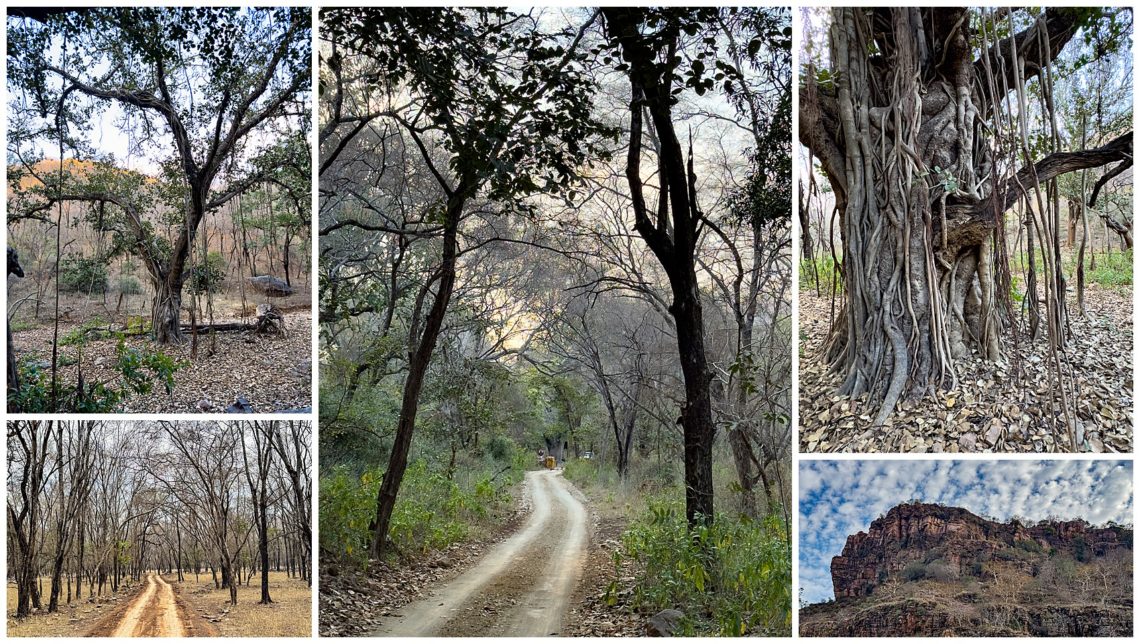
When doing the game drives, this is the type of environment we found. Mostly barren, which allows the best unobstructed animal viewing. There are few places for the animals to hide.
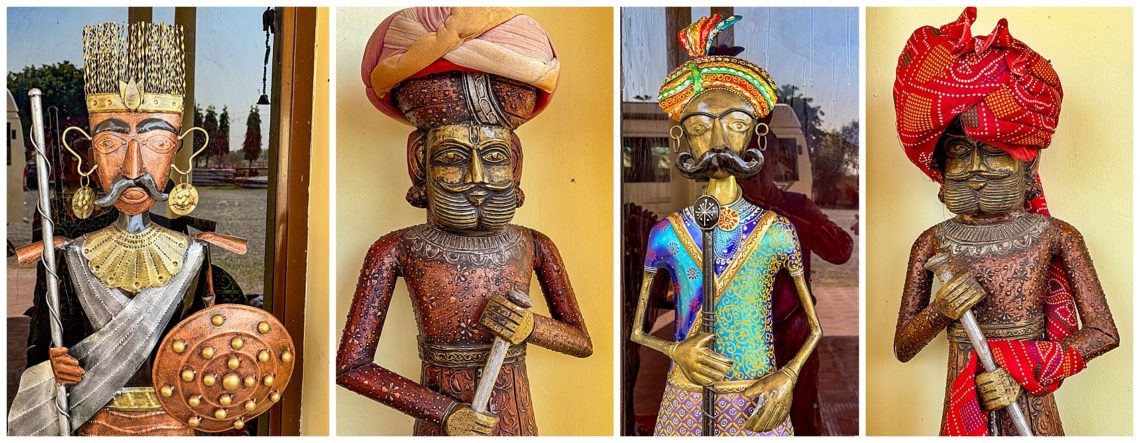
Interesting items we found in some of the shops in Pushkar.
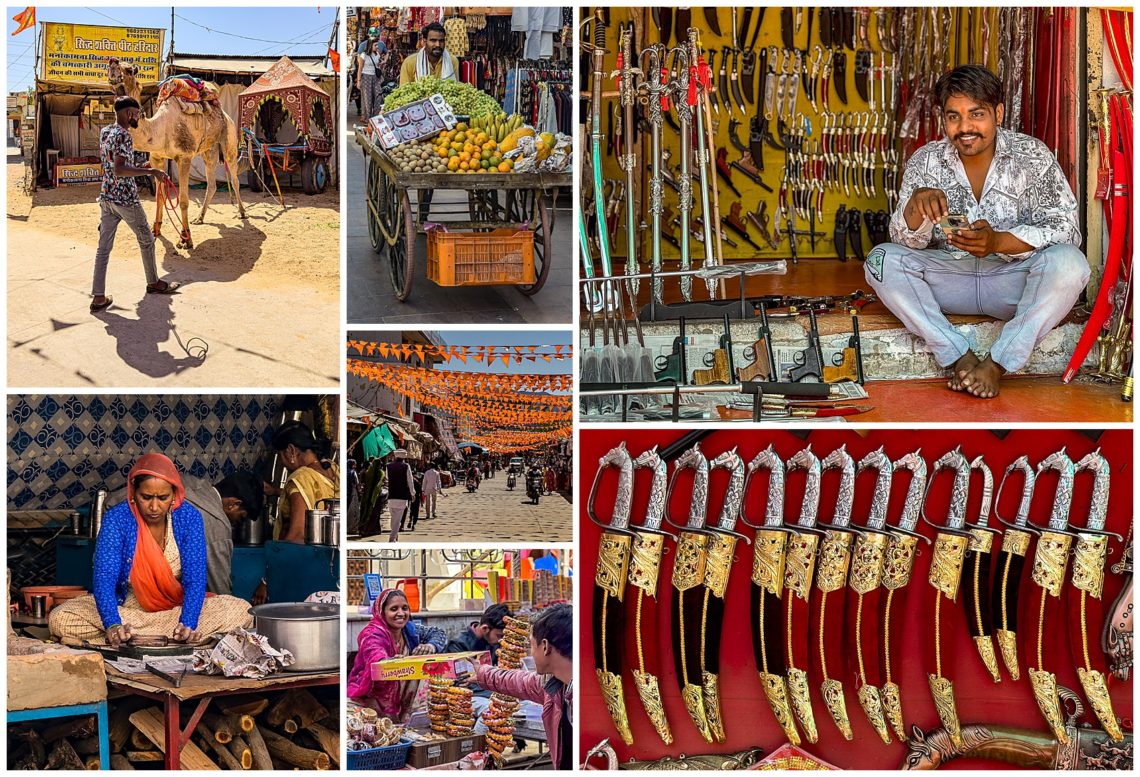
Enroute to the National Park, we stopped at Pushkar. It has changed a lot since our last visit. When we attended the Pushkar Camel Festival in 1995, the streets were not yet paved and the vendors were not as well organized.
